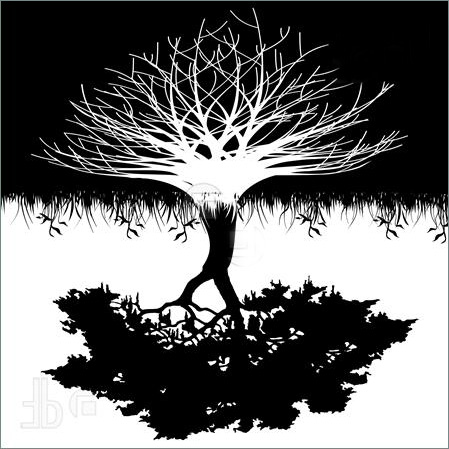
I live amid an urban oasis, a collection of very tall trees, timber bamboo and Japanese maples. Some of the trees are quite old, and know this tiny piece of Gaia’s garden far better than I. In a rainy year like this, the tree’s root-hairs – roots are the tree’s sensory system through which voluminous communication with Gaia occurs – are bathed in a rich, watery sea of nourishing information. So it is throughout Gaia’s entire global garden.
We think most often in terms of “up” or “down” even though earthly reality is “in” and “out.” A strange attractor compels us towards Gaia’s heart, and that attractor is what we call gravity; in the case of Gaia, we might call it love. Gaia holds us close and demands our attention; Gaia, after all, busily supports planetary-wide infestations of life. Humans are one such infestation, and thankfully, Gaia tolerates all infestations for a while – the plants and animals and everything in-between – from the smallest to the largest. In a very real sense, all infestations are Gaia; they arise from Gaia, they are Gaia’s garden.
Gaia is patient and knows no matter how wild and crazy they get, in the end the infestations will settle down and come home. There is, honestly, no place else to go. Yes, the present human infestation has convinced itself that it will spread to Mars, and more – that it will spread to the stars. Anything’s possible, but Gaia just laughs as always, a great breath shifting the jet stream into polar loops that simultaneously melt glaciers and produce enormous blizzards. Gaia is patient almost to a fault; imagine cleaning-up after 250-million years of dinosaurs.
Does Gaia ever complain? Well, some might call volcanoes, earthquakes, Tsunamis, tornadoes and the like “complaints,” but that feels too Biblical. Gaia moves a shoulder to relieve a little tension and the whole San Andreas Fault line shifts. Today those fault lines run under human infestations. Massive portions of the earth, as we know, are covered with all sorts of plant and animal infestations, but the human infestation is global, featuring densely inhabited pockets encrusted with human waste-products and built structures.
Gaia, like any patient gardener, watches and makes changes appropriate to the overall health of the garden. What humans call Death happens, but Gaia has outwitted Death for billions of years by incorporating Death itself; Gaia lends life and collects all debt through Death, right down to the last molecule. Gaia’s garden is inventively self-regulating, constantly fostering new infestations and retiring those unable to adjust to changed conditions. It’s how a 4-billion-year-old garden survives while floating in the bitterly cold reaches of outer space.
Of course, Gaia, is loved by Sol and Sol holds Gaia close-by. Sol constantly reaches out to Gaia for an impossible embrace, and in return Gaia’s garden lights up and beckons to Sol’s love, the warming rays of life.
Incidentally, trees are not, as many falsely imagine, standing with their feet stuck in the ground. Trees spend their lives with their heads buried in Gaia’s garden, and in this way secured, their limbs and bodies can hang free, waving in the wind and creating leaves unfathomable in number, shape and size to best absorb Sol’s love. When those leaves’ work is done, they fall into Gaia’s embrace and become, as will we all, mulch for Gaia’s Garden.